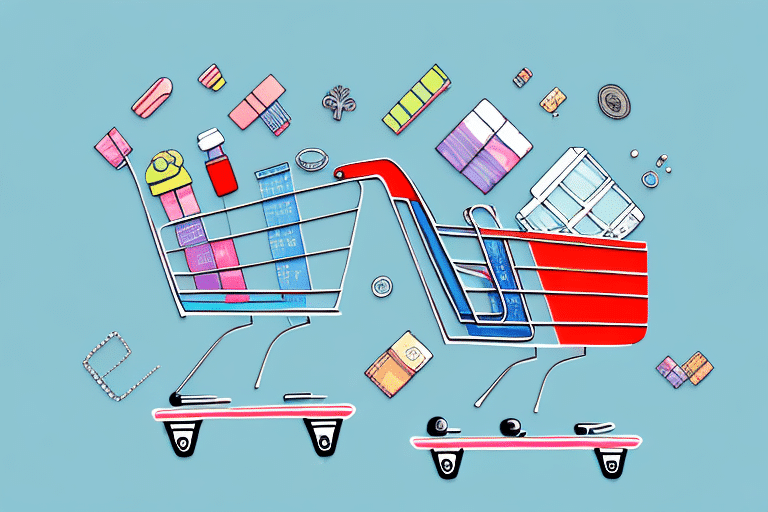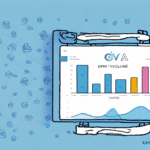The Impact of Abandoned Carts on E-commerce
Abandoned shopping carts are a significant challenge for e-commerce businesses, often leading to substantial lost revenue. On average, approximately 70% of online shopping carts are abandoned, according to a study by Barilliance. This high rate indicates that while customers show interest in products, various obstacles prevent them from completing their purchases. Understanding and addressing the reasons behind cart abandonment is crucial for improving sales and enhancing the overall user experience.
Understanding the Behavior of Abandoned Cart Shoppers
Psychological Factors
Customers abandon their carts for a multitude of psychological reasons. High shipping costs, unexpected fees, and a complicated checkout process can deter customers from finalizing their purchases. Additionally, a lack of trust in the website's security or concerns about privacy can lead to cart abandonment.
External Distractions
External factors such as distractions from other websites, a sudden loss of interest, or interruptions during the shopping process also contribute to cart abandonment. Recognizing these factors allows businesses to implement strategies that re-engage customers effectively.
Identifying and Analyzing Your Abandoned Cart Rate
To optimize the abandoned cart flow, it's essential first to identify and analyze your cart abandonment rate. Utilizing tools like Google Analytics or e-commerce platforms such as Shopify can help track visitor behavior and pinpoint where customers are dropping off. Analyzing this data can reveal patterns, such as specific products that are frequently abandoned or stages in the checkout process where customers are exiting.
Understanding Key Metrics
Key metrics to monitor include the overall abandonment rate, the average time spent before abandonment, and the specific reasons cited by customers for not completing their purchases. Surveys and feedback forms can be valuable tools for gathering this information.
Building an Effective Abandoned Cart Recovery Strategy
A robust abandoned cart recovery strategy encompasses multiple tactics designed to re-engage customers and encourage them to complete their purchases. This strategy may include:
- Email Reminders: Sending timely and personalized emails to remind customers of their abandoned items.
- Retargeting Ads: Utilizing social media and display ads to reach customers who have left items in their carts.
- Personalized Offers: Providing discounts or special offers as incentives for completing the purchase.
Implementing these tactics effectively requires a deep understanding of customer behavior and preferences.
Crafting Compelling Recovery Emails
Personalization and Relevance
Personalized emails that address the customer by name and reference the specific items left in the cart are more likely to resonate and encourage action. Including high-quality images and detailed product descriptions can remind customers of the value of their intended purchases.
Clear Call-to-Action
Each recovery email should include a clear and prominent call-to-action (CTA) that directs customers back to their cart. Buttons like "Complete Your Purchase" or "Return to Your Cart" help guide the customer towards the desired action.
Timing of Emails
Timing is crucial when sending recovery emails. Research suggests that sending the first reminder within the first hour of abandonment can increase the likelihood of conversion by up to 20% compared to waiting 24 hours (SaleHoo). Subsequent follow-ups should be strategically timed to avoid overwhelming the customer.
Best Practices and Common Mistakes in Abandoned Cart Optimization
Best Practices
- Multiple Recovery Attempts: Sending a series of follow-up emails increases the chances of recovering the sale.
- Incentivizing with Discounts: Offering a discount or free shipping can provide the extra push needed for customers to complete their purchase.
- Mobile Optimization: Ensuring that recovery emails and the checkout process are mobile-friendly accommodates the growing number of mobile shoppers.
Common Mistakes to Avoid
- Overwhelming the Customer: Bombarding customers with too many emails can lead to annoyance and further abandonment.
- Generic Messaging: Using impersonal and irrelevant messages fails to engage the customer effectively.
- Lack of Clear CTA: Without a clear and compelling call-to-action, customers may not know how to proceed.
By adhering to best practices and avoiding common pitfalls, e-commerce businesses can enhance their abandoned cart recovery efforts and improve overall conversion rates.
Nurturing Long-Term Relationships with Recovered Customers
Recovering an abandoned cart is not just about salvaging a single sale; it's also an opportunity to build a lasting relationship with the customer. Implementing loyalty programs, personalized offers, and consistent engagement can turn one-time buyers into repeat customers. For instance, offering a loyalty point for completing a purchase can encourage future interactions and foster brand loyalty.
Tracking and Measuring the Success of Your Recovery Efforts
Measuring the effectiveness of abandoned cart recovery strategies is essential for continuous improvement. Key performance indicators (KPIs) to track include:
- Recovery Rate: The percentage of abandoned carts that are successfully converted into sales.
- Revenue from Recovered Carts: The total income generated from recovered abandoned carts.
- Engagement Metrics: Open rates, click-through rates, and response rates of recovery emails.
Regularly analyzing these metrics allows businesses to refine their strategies, test new approaches, and ultimately enhance their recovery efforts for better results.
Key Takeaways and Actionable Steps to Improve Your Conversion Rates
- Analyze Abandonment Causes: Use analytics tools to understand why customers are abandoning their carts.
- Implement Timely Recovery Strategies: Send personalized and well-timed recovery emails to re-engage customers.
- Offer Incentives: Provide discounts or special offers to encourage customers to complete their purchases.
- Optimize the Checkout Experience: Simplify the checkout process and ensure it is mobile-friendly.
- Continuously Monitor and Adjust: Track the performance of your recovery strategies and make data-driven adjustments.
By taking these actionable steps, e-commerce businesses can effectively reduce cart abandonment rates, recover lost sales, and foster long-term customer relationships, ultimately driving higher conversion rates and sustained growth.






















